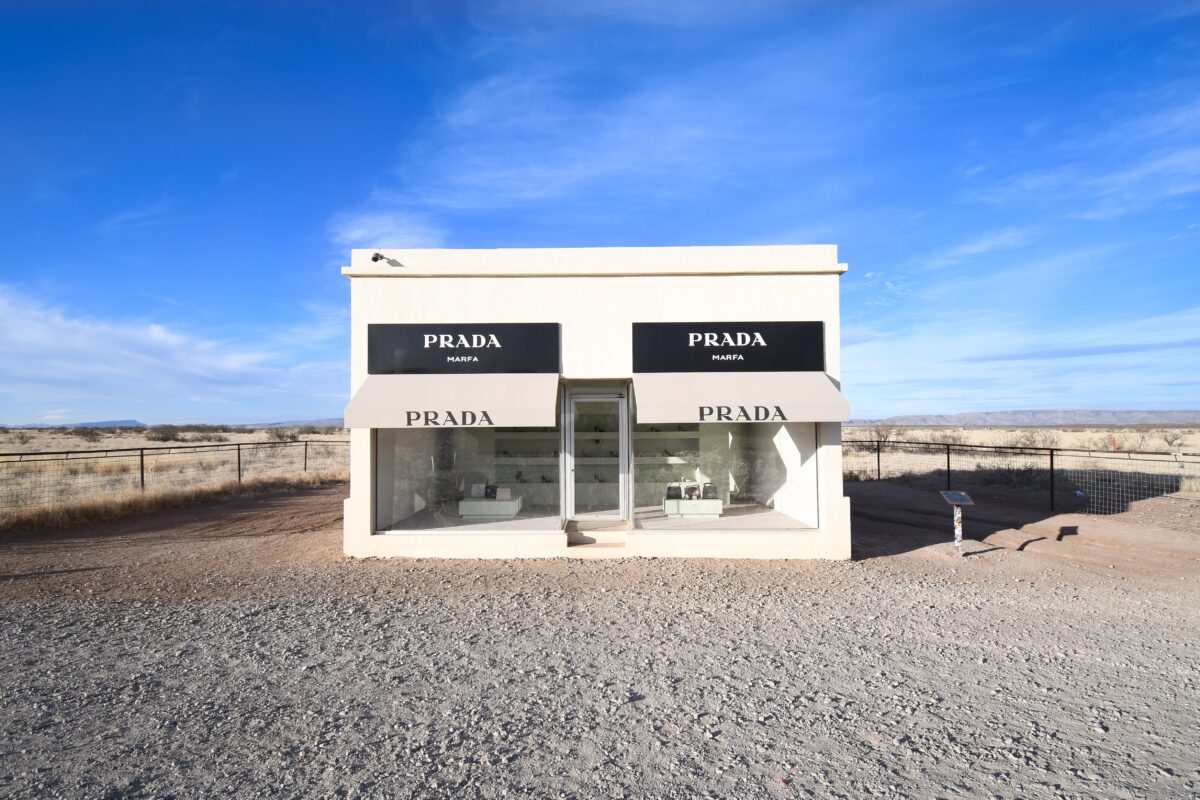A new documentary looks at the meaning of Marfa’s famously Instagrammable installation
For better or for worse, Marfa is a city defined by artists. Whether it’s New York sculptor Donald Judd, who moved to Marfa and purchased large swaths of land on a former army base in the 1970s, or a megastar like Beyoncé, who visited the West Texas city and made the outdoor art installation Prada Marfa famous by posting a photo of herself there on social media, Marfa has been an artist’s muse for decades.
In his new short documentary, Prada Marfa? A Film about a West Texas Icon, American studies professor Randy Lewis takes stock of the town’s transformation through the lens of Prada Marfa, a hyperreal public art installation that has become emblematic of the city. The short is available on Youtube, where Lewis’ other videos have received more than 100,000 views over the summer months, and broadens the academic conversation about the function of public art.
The installation was built in 2005, when European artist duo Elmgreen & Dragset created an incredibly accurate, though non-functional, Prada store on private land on the side of the road of Interstate 90 outside Marfa. It was a way, said Lewis, paraphrasing the artists, of “poking at the ubiquity of luxury brands by putting one in one of the most unlikely spots you could imagine.”
Lewis begins his film with a sunset image of the Prada boutique alongside a quote from Texas Monthly magazine displayed across the screen: “Prada Marfa was born for the Instagram era. It has garnered 572,080 likes since Beyoncé posted an image of herself there.” It’s an entry point that firmly plants viewers in Lewis’ perspective, which is focused less on the artwork itself than the ways in which the work has been received. “I’m interested in how something like Prada Marfa enters the cultural landscape and causes little shifts or big shifts in our experience of place,” he says. To understand these shifts, he interviews those making the pilgrimage to the work, whether they’re longtime residents or tourists to Texas and Marfa.
Lewis notes the ways in which viewers enact their varied responses in everything from copycat tribute posts on social media to vandalization — reactions that Lewis describes as the joy and the challenge of public art. However, the joys and challenges around the work can also mask a rift between a public consuming and reproducing the Prada Marfa image and a public affected in practical ways by Marfa’s hypercharged economic development. “If Prada Marfa is a sort of wake-up call to sleep-walking consumers,” Lewis asks, “what happens when people just keep dreaming and when the dream starts to change something real in people’s lives?”

There are no simple conclusions in Lewis’ film. Instead, he gives voice to the incredibly wide range of response to the installation from the people he interviews, many of whom he met at the site itself. The voices include long-time Marfa residents, earnest tourists, artists, designers, skeptics, and art historians.
Lewis’ own voice, which appears in voiceover at the beginning and end of the film, is ambivalent. He is impressed by Elmgreen & Dragset, and by the cultural impact that the store has had, but also seems to mourn the degree to which their artistic desire to poke fun at consumerism and vanity has lost out, in the public response, to unironic participation in these tendencies.
This mournful ambivalence anchors much of Lewis’ more publicly oriented work, which includes the short documentary Texas Tavola: A Taste of Sicily in the Lone Star State and the online publication The End of Austin. Both projects explore shifting cultural identities as they function within and collide head-on with the changing landscape of Texas. Future projects, including a book on seismic shifts in American culture during the Trump era, intend to continue this exploration.
“There is a kind of utopian desperation in my work,” says Lewis. “I just see that we could very easily blow it and get to the point where the possibilities of infrastructure, affordability, and democratized culture feel out of reach. But they don’t have to be.”
